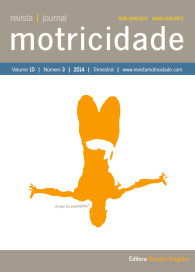Injuries among Portuguese kitesurfers: The most affected body regions A pilot study
DOI:
https://doi.org/10.6063/motricidade.6022Resumo
Aquatic sports keep rising in popularity. Kitesurfing is a high-risk sport that combines aspects of several water sports. The dangers of high-risk sports have been widely studied. Kitesurfing is a relatively new water sport, and the understanding of the injuries due to its practice has not yet been largely investigated. The purpose of this study is to investigate the most common types and causes of injuries among Portuguese kitesurfers. The data was collected using a retrospective 12 months web-based questionnaire. A total of n= 87 kitesurfers, mostly from the North, showed that 75.9% have a kitesurfing initiation course and 57.5% use protective equipment. A total of 60.9% has been injured in the 12 month’s period, being the knee and the lumbar spine the most common body injury. A reasonable number of injuries occurred while performing a landing or a maneuver, being 53.9% of the injuries reported as a new injury. This 12 month’s retrospective study supports earlier studies and provides basis knowledge about the incidence of Portuguese kitesurfers injuries. The data support the benefits of physical fitness (p< 0.05) in injuries prevention.Downloads
Publicado
Edição
Secção
Licença
Os autores dos manuscritos submetidos para publicação deverão ceder, a título integral e permanente, os direitos de autor (copyright) à revista Motricidade e às Edições Sílabas Didáticas. A cedência de direitos de autor permite a publicação e divulgação do artigo em formato impresso ou eletrónico e entrará em vigor a partir da data de aceitação do manuscrito. Os autores concedem, ainda, os direitos para a revista Motricidade utilizar e explorar o respetivo artigo, nomeadamente para licenciar, ceder ou vender o seu conteúdo a bases de resumos/indexação ou outras entidades.
Nos termos da licença “Creative Commons”, os autores poderão reproduzir um número razoável de exemplares para uso pessoal ou profissional, mas sem fins comerciais. Nos termos da licença SHERPA/RoMEO, os autores poderão, ainda, disponibilizar/arquivar uma cópia digital final (versão postprint) do artigo no seu website ou no repositório científico da sua instituição.


